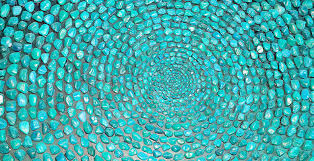Presentation :
https://danslabesaceduptitpoucet.com/collections/turquoise
Name :
- Turquoise.
Etymology:
- Named after Turkey, from where the first turquoises arrived in Europe (Tavernier, 1678).
Group, Family:
- Turquoise Group.
Color :
- Blue, Light Blue, Dark Blue-Green, sometimes Apple Green to Light Green, sometimes Green-Gray to Greenish (Turquoise dehydrated).
Chandelier:
- Resinous, Earthy, (Vitreous on crystals).
Origin :
- Iran, Egypt, China, Tibet, United States, Poland, Brazil, Mexico etc.
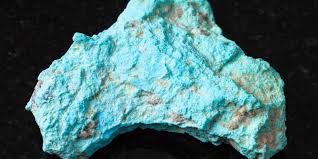
Crystal system:
- Triclinic.
Chemical composition :
- Turquoise: Cu2+Al6(PO4)4(OH)8.4H2O forms a series with Chalcosiderite: Cu2+Fe3+6(PO4)4(OH)8.4H2O | Coloring: Blue: Copper in Cu2+ form in octahedral coordination | Green: Iron in Fe3+ form and Copper in Cu2+ form.
Transparency:
- Very generally Opaque | Sometimes aggregates Translucent | Very rare Transparent crystals.
Density :
- 2.60 to 2.90 (Tur. Iran: 275-2.85; Tur. USA: 2.6-2.7; Tur. China: 2.70; Tur. Israel: 2.56-2.70; Tur. Sinai: 2.81; Tur. Tibet: 2.72; Tur. Brazil: 2.40-2.65) Crystals: 2.84.
Hardness :
- 5 to 6.

Cleavage:
- Null.
Breakage:
- Conchoidal, Irregular.
Line color:
- White.
Shock resistance:
- Fragile.
Heat resistance:
- Bad (gets dehydrated).
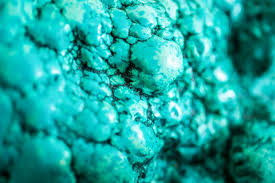
 Special warning about counterfeits:
Special warning about counterfeits:
Many counterfeits and imitations can be found on the market as well as on the internet. It is therefore very important to distinguish the true from the false. The best known imitations are magnesite and dyed howlite.
Refer to the attached article: “Turquoises between true and false”
https://danslabesaceduptitpoucet.com/blogs/infos/les-turquoises-entre-vrai-et-faux
Turquoise throughout the world and history:
The name of the stone comes to us from the 16th century and comes more precisely from the French "Turkish stone" because it was during the Crusades that it was best known in the West and because it is through Turkey that it came to us arrived. Turquoise is rare and precious for its quality and the beauty of its colors. It has been highly appreciated and used as a precious and ornamental stone for centuries for its unparalleled color.
Turquoise is a very soft mineral that is easy to cut and sculpt. It can be polished to a waxy luster. However, the color of turquoise can deteriorate over time and change, which explains the rather dull hues of some Mesoamerican objects made from this material that have survived to this day.
Having become very popular on the market, we can unfortunately see many imitations today, sometimes very difficult to detect, even by experts and many others fortunately very easily detectable due to their very crude level of imitation. Below are some examples of more or less crude imitations.
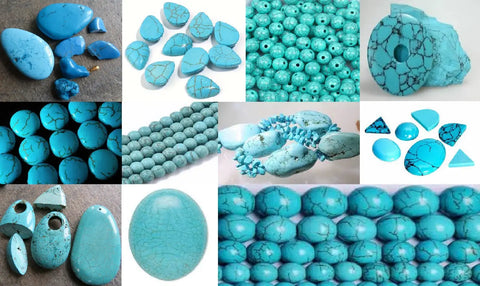


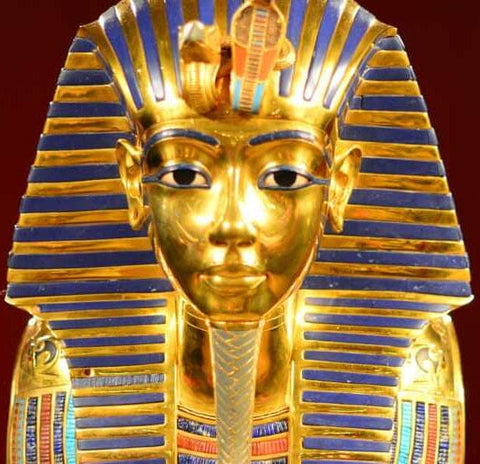

During the time of ancient Mesoamerica, turquoise was one of the most prized materials and perhaps even the most appreciated of all for the manufacture of sacred and decorative art objects such as masks, jewelry and costumes of great chiefs and high priests. Turquoise being very rare, it was even more prized at this period, it was imported and was therefore one of the sought-after goods part of the trade, the most beautiful coming from elsewhere in the American southwest. Turquoise was associated with deities like the fire god Xiuhtecuhtli, also known as “Lord Turquoise.”
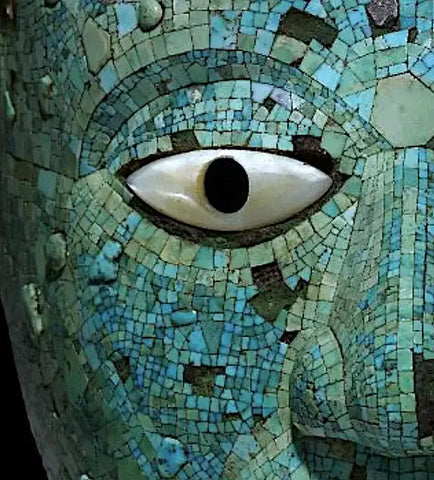
Although turquoise has been found dating to the Preclassic period (2nd-1st millennium BCE), regional trade in this material did not actually begin in any significant way until the early Postclassic period (from 1000 CE).
Most of the turquoise used in Mesoamerican cultures came from what is now New Mexico, specifically the Cerillos region, as indicated by chemical analysis of the artifacts. Turquoise was available in northern Mexico, but its quality was lower than that of New Mexico stone. Mesoamerican goods like exotic bird feathers were used as currency. Such was the importance of turquoise in regional trade that the routes connecting Mesoamerica to the American Southwest were compared to the Silk Roads connecting China to Europe and were called the "Turquoise Road".
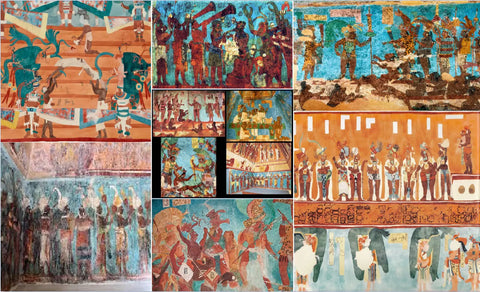
Murals made between the 11th and 12th centuries, depicting the gods wearing Turquoise, can be seen in Tulum for example on the east coast of the Yucatan Peninsula, in southern Mexico. These frescoes are representations of Mesoamerican art. They are also partially painted using turquoise because, like Lapis Lazuli in other places, turquoise reduced to powder constituted an excellent painting pigment.

However it was also highly valued and therefore sought after and used by other cultures such as the Mayans, the Tarascans and the Aztecs (aka Mexicas).

Although largely reserved for sovereigns, political, religious and military elites, turquoise was collected in large quantities, as demonstrated by the excavations of Casas Grandes (alias Paquimé) led by Charles Di Peso, who uncovered warehouses full of this precious mineral. Other turquoise warehouses discovered at Alta Vista, in northwestern Mexico (where there are no local deposits), show that the level of production was very high. At Alta Vista, there is evidence that the ore was collected and then processed into small finished tiles for distribution elsewhere in Mesoamerica. That turquoise was reserved for the elite of society is demonstrated by the tombs of Alta Vista where it was deposited with other precious materials in rich tombs clearly indicating that the occupant belonged to the upper echelons of the community . Mayan sites like Chichen Itza also demonstrated that turquoise was imported. Aztec rulers included unworked turquoise in the list of goods they collected as tribute from conquered tribes.
Artisans who could make and carve art objects from materials like shells and turquoise were highly favored in Mesoamerican cultures. They were housed in a separate part of the royal palace in the Aztec capital of Tenochtitlan, the totocalli or “bird house”.
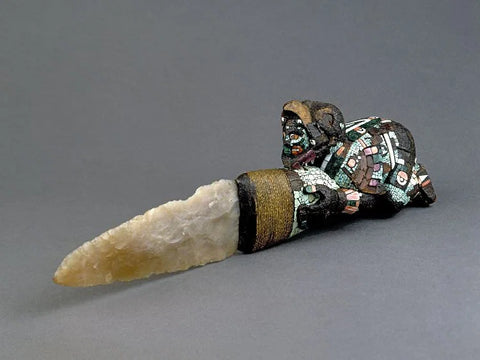
Commonly used as an inlay material for weapons of war or rituals such as swords or shields, turquoise was also used for making jewelry such as tiaras, necklaces, pendants, bracelets, belts, pectorals and studs (commonly worn in the lower lip by the nobility). It could be worn as beads on various parts of the body or as an addition to more intricate pieces of jewelry. As a mosaic, turquoise was used to cover almost everything, from knife handles to masks and jewelry. In general, the mosaic support was made of wood, the tesserae being glued using pine resin.
Turquoise, due to its precious appearance, was used in votive offerings. At Chichen Itza, for example, a sacred Mayan cenote contained numerous gold and turquoise discs thrown there during religious ceremonies to obtain protection from the gods. Precious objects made with turquoise have been discovered during archaeological excavations in the foundations of the pyramids of Mesoamerican temples, among these objects, the famous shield inlaid with turquoise dedicated to the rain god Tlaloc, buried under the Templo Mayor of Tenochtitlan .

Aztec shield in turquoise The British Museum
Turquoise was so precious to the ancient Mesoamericans that they associated it with several of their gods to whom they made offerings during sacred religious rituals in order to obtain protection during wars but also to obtain abundance during harvests.
Mesoamerican priests themselves wore masks inlaid with turquoise during important ceremonies such as the Aztec Ceremony of the New Fire, also known as the Ceremony of the Binding of Years or Toxhiuhmolpilia. This ritual only took place every 52 years, the completion of a complete cycle of the Aztec solar year. (xiuhmopilli ). The purpose of this ritual was none other than to renew the sun and ensure another 52-year cycle. During the ceremony, a high priest, dressed as a Xiuhtecuhtli and wearing a turquoise mask, would sacrifice the heart of a living victim and then attempt to light a sacred fire in the now empty chest cavity. If the fire did not light, then the sun would not be renewed and therefore there would be no new 52-year cycle.

Aztec two-headed serpent British Museum
In short, it would be the end of the Aztec world. The association with Xiuhtecuhtli and time explains why the symbol for turquoise was a circle with an hourglass at its center. An alternative symbol for the semi-precious stone in the late Postclassic period was a quincunx (like the five on a die), which was also how the Aztecs viewed their universe.
In Aztec culture, Xiuhtecuhtli was depicted wearing a pointed turquoise crown, breastplate, and mosaic shield. Xiuhtecuhtli being associated with warriors, the latter also wore turquoise objects, notably pectorals in the shape of butterflies or stylized dogs.

Xiuhtecuhtli was associated with rulers during the Late Postclassic period (13th–16th centuries), and these also wore a pointed crown or tiara of turquoise mosaic applied to gold leaf, the xiuhuitzolli . This crown was also a Nahuatl glyph and was used to represent rulers, military leaders, judges, and the Aztec ruler Moctezuma I (r. 1440–1469). Aztec rulers also wore in their coronation ceremonies the xiuhtlapilli tilmahtli , a blue cloak decorated with pieces of turquoise.
Effigies of the gods were placed atop temple pyramids, and they were often decorated with turquoise. The figure of the war god Huitzilopochtli, which stood atop the Templo Mayor of Tenochtitlan, was thus adorned. The fire serpents known as xiuhcoatl – Huitzilopochtli carries one as a weapon – were also believed to have skins covered in turquoise, and so these creatures are often depicted as such in Mesoamerican art.

One of the most notable pieces of art from the Mesoamerican period is a turquoise mosaic mask depicting the fire god Xiuhtecuhtli, dating from 1400-1521. The mask is made of cedar wood with mother-of-pearl eyes, conch shell teeth, and the eyelids were once covered with gold leaf. The outer surface is made up of hundreds of turquoise tiles, those surrounding the eyes, eyebrows, nose and mouth being cut with particular precision. The choice of color shades was carefully considered, with lighter and bluer shades used where light naturally catches the face, such as the nose, cheeks and forehead.
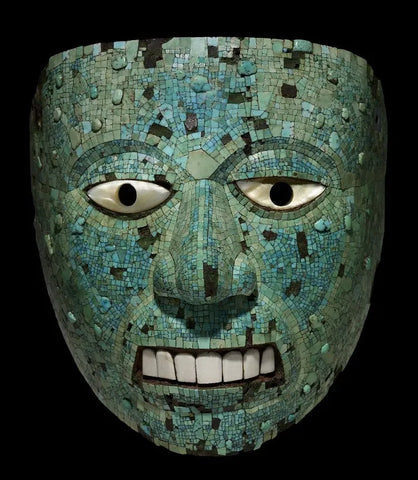
Mask of Xiuhtecuhtli Trustees of the British Museum
The mask was intended to be worn either by an imitator of god during religious ceremonies, or by an effigy of the god, as indicated by the small hole on either side of the piece through which a cord would have passed. The mask was certainly part of the treasure brought from Mesoamerica by the conquistador Hernán Cortés (1485-1547) and offered to Charles V, Holy Roman Emperor (r. from 1519 to 1556). The mask is on permanent display at the British Museum in London.

Aztec two-headed serpent (detail) British Museum
Another turquoise masterpiece, also housed in the British Museum, is an astonishing double-headed serpent pectoral. Contemporary with the Xiuhtecuhtli mask, this piece is once again made of carved cedar wood which has been entirely covered with small squares of turquoise. The two red mouths are made of red spiny oyster shell, and the white teeth are made of conch shell. The eyes were once inlaid with a material like pyrite or obsidian, as indicated by remaining traces of beeswax.
This too was probably part of a ceremonial costume, probably related to the feathered serpent god Quetzalcoatl. The serpent was a powerful and frequently used image in Mesoamerican art because it represented regeneration (since the reptile regularly sheds its skin). The two-headed serpent or maquizcoatl was considered a bad omen, but the name is also associated with Huitzilopochtli, so this piece may have been worn on the chest of a high priest related to that god. The work measures 17 inches or 43.3 centimeters wide.

Skull of Tezcatlipoca in turquoise Trustees of the British Museum
A third turquoise masterpiece that has found its way to the British Museum is a human skull (male, approximately 30 years old) covered in mosaic to represent the Toltec and Aztec god Tezcatlipoca who was closely associated with creation, to war and change through conflict. It is possible that it was worn as a back ornament, although its interior lining and deerskin straps might suggest otherwise. The god was often depicted in art with a black stripe across his face, and this is represented here by lignite tiles. The eyes are rendered in polished pyrite with a white conch shell, while the nasal cavity is covered in a red spiny oyster shell. Once again, the turquoise tiles have been expertly shaped to perfectly cover the contours of the skull behind them.


Properties and virtues:
Virtues on the Physical Plan:
- Strengthens, regenerates and detoxifies the body.
- Promotes blood purification.
- Promotes male fertility if associated with a garnet.
- Promotes female fertility if associated with moonstone or chrysocolla.
- Treats and regulates hormonal disorders.
- Strengthens the eyes.
- Strengthens the liver and liver functions.
- Strengthens the glands.
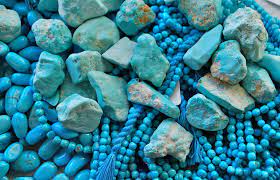
- Promotes and increases the irrigation of muscle tissues, particularly to treat tears in ligaments and tendons.
- Helps the body fight against viruses and bacterial infections.
- Helps fight polyps.
- Promotes the detoxification of toxins in the body from alcoholic beverages, pollution, and other poisons.
- Promotes the respiratory system and helps fight asthma.
- Soothes sore throats and reduces coughs.
- Treats and soothes hay fever ideally in combination with fossil wood.
- Promotes restful sleep.
- Soothes migraines and headaches.
- Soothes muscle, tendon and ligament pain.
- Helps combat stuttering problems.
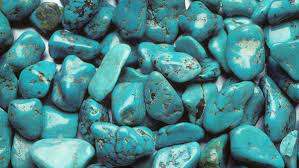
Virtues on the psychological, emotional and mental level:
- Unlocks calm, thoughtful speech.
- Facilitates communication and exchanges allowing you to express yourself freely and without fear of being judged.
- Brings wisdom, calm and serenity.
- Promotes reconnection to one's humanist, altruistic and generous side.
- Develops creativity and public speaking skills.
- Chases away negativity and helps fight nightmares.
- Promotes positive thinking and brings happiness and joy.
- Helps fight depression, spleen and anxiety.
- Promotes self-assurance and self-confidence.
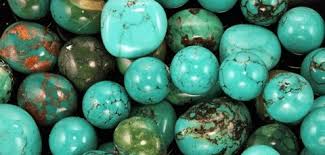
Spiritual virtues:
- Promotes the transmutation of negative thoughts and energies.
- Helps to gently refocus in order to find the path to inner peace, wisdom and serenity.
- Promotes and helps reconnection to angelic planes.
- Promotes the unblocking of the pineal gland, seat of the third eye which contains at the first level the capacities of intuition and discernment and at higher levels, mediumship.
- Intensifies connection with angels and guides.
- Excellent meditation stone.
- Perhaps a good support in shamanic rituals or for rituals of passage (used by soul smugglers.)
- Drives out and dissolves miasmas and egregores from implants.
- Purifies negative karma on all levels.
- Purifies the aura as well as the different energy bodies.
- Brings light and harmony to the different spiritual bodies.
- Intensifies and recharges the different bodies with energy.
- Helps ensure the transition between this world and the world of the invisible. Ideal for people at the end of their life.
- Promotes and develops psychic and parapsychic gifts and faculties, such as clairvoyance, telepathy, etc.
- Promotes astral travel.
- Turquoise elixir:
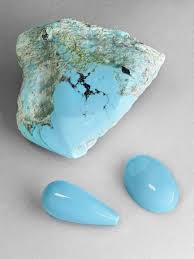
- Place a few turquoise crystals in a container filled with water and let it sit outside overnight so that it bathes in the moon's rays. Then, expose it during the day so that it also receives the sun's rays. In the evening, pour the contents of the container into your bath, slip inside and let the restorative energies heal you.
- This same elixir can be used to treat a sprain or any other muscle pain. It also invigorates the body by strengthening its ability to fight viruses and infections. In addition, it repairs damaged tissues and relieves skin disorders due to stress.
- For migraines, soak a cloth in the elixir and place it on the forehead until the pain disappears.
- Psychic and psychological virtues of turquoise.
Special warning:
- Concerning the use as an elixir, due to its components, it is advisable to practice an elixir in indirect mode or, if in doubt, to rely on a lithotherapist.
Chakras:
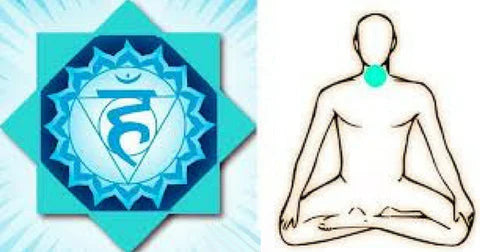
- Throat chakra.

- Third eye chakra.
Cleaning, recharging, reprogramming:
- Cleaning with clear spring water or filtered water (never salt in the water. Salt alters the structure of the mineral and damages it). Soak the mineral overnight in an unmarked glass container, and then take it out in the morning to rinse it with new spring or filtered water.
- Direct recharge on a crystal or amethyst druse, in a crystal or amethyst geode. You can also place a dozen laser or rock crystals in a circle (like a time dial), points toward the center, and place your minerals in the center to recharge them. Another method, place your minerals in a singing bowl: Tibetan or crystal bowl, (on a cotton cloth to avoid bowl/mineral vibrations), then ring the bowl to fill your minerals with this sound energy. Last method, place your minerals on a disc (wood or mineral) engraved with the flower of life or the seal of Solomon or any other forms of sacred geometry.
- Reprogramming: Reprogramming consists not of telling your mineral what it should or should not do, but of putting the mineral in resonance with you to ask it to do what it should do, for you. Reprogramming must be done after each cleaning and must remain simple. Example of reprogramming: "I ask this mineral to bring me all the virtues and benefits on different levels, for my greatest good as well as for the greatest good of the people around me."

